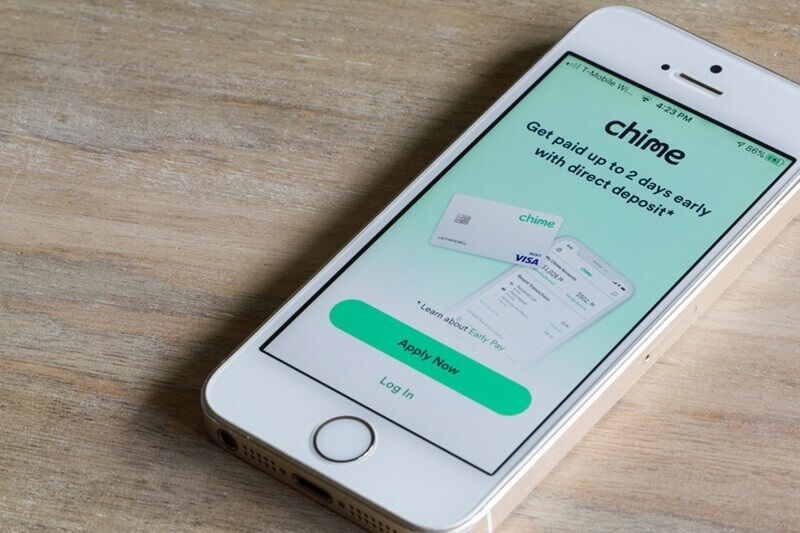
Years ago, banking was all about going to a local branch, talking with a teller, and completing forms. These days, though, online banks are altering the way Americans deal with money. Online-only banks are entirely online, doing many things without ever opening a storefront. With that change, consumers started looking at online banks vs. traditional banks. Both have advantages, but online banks excel at convenience, improved rates, and fewer fees.
This blog will show the benefits of online banking for American consumers and how they compare to traditional alternatives. We will also examine ATM network comparison digital banks, fees, and other logistical matters.
Online banks are banks that do all of their business online. They have no branches. Customers deal with online banks through websites, mobile phones, and customer service numbers. Some of the popular U.S. online banks include Ally Bank, Chime, and Varo.
These banks provide most of the services you’d expect: checking and savings accounts, loans, and even investment options. Since they operate without physical branches, they often pass on cost savings to customers through higher interest rates or lower fees.

Traditional or brick-and-mortar banks have physical branches across the country. Clients may visit such institutions to conduct business, either in person, opening an account, meeting a loan officer, or to file grievances.
Legacy banks like Chase, Wells Fargo, and Bank of America offer extensive services. They also offer digital services through apps and websites. Their infrastructure and manpower requirements, however, incur higher fees and lower interest rates than online banks.
When comparing online banks vs brick-and-mortar banks, one should consider differences in service, price, and convenience.
Online banks let customers manage their money from any location with an internet connection. You don't have to go into a branch to deposit a check, send money, or check your balance. Most online banks have straightforward, 24/7-accessible apps.
Physical banks, on the other hand, need to go into a branch for some transactions. Although they do have online capabilities, these may be less sophisticated or more limited than those of online banks.
Higher interest rates are among the most important advantages of online banking in the US. With no expense of branch maintenance, web banks are able to offer higher rates on deposit accounts and CDs. Most customers prefer such banks because they would like their cash to earn money faster.
When one compares interest rates online banks USA to traditional, the difference is clear. Traditional banks will have savings rates of 0.01% listed, while online-only banks like to offer 3-4% or higher, depending on the account type.
Online banks are again better in another area, with lower fees. These banks typically cut a plethora of fees that consumers dislike, such as monthly maintenance fees or minimum balance stipulations.
Online-only bank fees are typically limited to certain situations, such as withdrawing cash from an ATM that is not in their network. Brick-and-mortar banks typically have overdraft fees, ATM fees, and maintenance fees. These can add up over time.
One of the most prevalent problems with selecting online banks is access to ATMs. Individuals are concerned about how they will get cash when there are no branches around. Most online banks address this by having arrangements with extensive ATM networks.
The online banking comparison ATM network highlights that most online banks provide free access to thousands of ATMs nationwide. Some even refund fees on out-of-system ATMs. Bricks-and-mortar banks have ATM systems too, but they may charge for accessing non-system ATMs.
Face-to-face service is provided by traditional banks, perhaps adequate for complicated matters. Online banks use live chat, email, and phone assistance. Although this is generally adequate, some clients appreciate one-on-one assistance.
Keeping this in perspective, developments in live chat and artificial intelligence customer service tools have enhanced the U.S. digital bank’s advantages in this department. The majority of customers are reported to be content with digital assistance, particularly for standard issues.
Let us now look at the specific advantages that one gains from online-only banks as a U.S. consumer.
Your savings will grow faster than they would in a traditional bank because of the interest rates offered by online banks in the USA. Better savings account and CD rates attract those who want to build their wealth.
Cutting out the unnecessary fees is one of the primary reasons why individuals come to visit online banks. Online banks usually don't charge maintenance fees or minimums. Compared to traditional banks, the fees online-only banks usually stand out and are obvious.
Online banks provide 24/7 access via mobile apps and websites, too. That's convenience that is perfectly suited to busy life. On the go, with an irregular schedule, or prefer online, these banks make money management convenient for you.
While consumers are concerned about having access to ATMs, most online banks are part of huge networks such as Allpoint or MoneyPass. When comparing the digital bank ATM networks with the legacy banks, these networks enjoy wider national coverage.
Online banks spend considerably on security technology. Two-factor authentication, encryption, and real-time fraud alerts are de rigueur. Further, online banks roll out innovative capabilities sooner than legacy players do.
Whereas advantages are evident, few shoppers will switch to online banks. Here's a peek at the average worries.
There are individuals who want to have a branch they can go to. Whether it is depositing money or solving intricate financial needs, the fact that there are no branches in online banks can feel restrictive.
It is less easy to deposit cash with online banks. Some permit deposits at participating merchants, but this is not as simple as going to a branch.
Despite the ease of online assistance, certain customers prefer the face-to-face assistance offered by conventional banks.
Traditional banks possess an aging image and history. Internet banks, as new but secure and regulated, may deter some customers despite the U.S. digital banks benefits.
Not everybody will equally benefit from moving to online banks. The following are best suited for these banks:
Some customers may still prefer traditional banks because of:
Greater convenience in accessing a large variety of financial products, such as business loans or mortgages.
Expansion of online-only banks means that online banking will grow even more. The younger generations are particularly fond of online methods and are not branching-loyal. Online banks, with further technology advancements, will have more products on offer and enhanced interfaces.
But brick-and-mortar banks are not disappearing. They are changing by enhancing their web presence and closing less-congested branches. Others are combining face-to-face and online services to remain competitive.
To consumers, online banks provide distinct benefits in rates of interest, convenience, and lower fees. All these coincide with the shifting digital lifestyles of contemporary banking clients. Nevertheless, the old-fashioned banks still exist, particularly for those who greatly emphasize interpersonal service and full financial products.
Knowledge of online bank vs physical banks informs consumer choice. If you like the ease of electronic, or the ease of having a facility within your neighborhood, there's a banking option ideally suited for you.
This content was created by AI